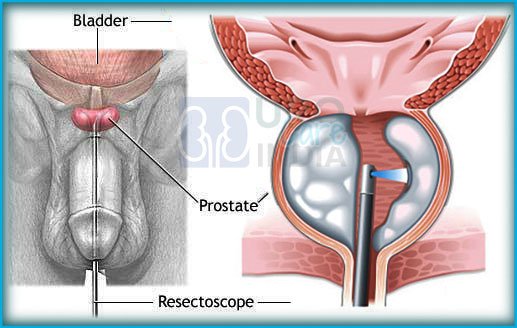
HoLEP
Holmium laser prostate surgery is a minimally invasive treatment for an enlarged prostate. The procedure, which is also known as holmium laser enucleation of the prostate (HoLEP), uses a laser to remove tissue that prevents urine from flowing through the prostate. The prostate tissue is then cut into easily removable pieces with a separate instrument.
The treatment offers a long-term solution for an enlarged prostate, also known as benign prostatic hyperplasia (BPH). The prostate gland grows in two stages: during puberty, when the gland doubles in size, and after the age of 40, when the prostate gland gradually increases in size. Additionally, HoLEP preserves removed tissue so that it can be analyzed in the laboratory for additional conditions, such as prostate cancer.
Symptoms of conditions that may require HoLEP:
- Pain in the bladder caused by stones in the bladder
- Blood in the urine
- Recurrent urinary tract infections (UTIs)
- Recurrent acute urinary retention
The diagnosis is made using a variety of diagnostics. The following tests may be used:
- Physical workup
- Laboratory tests: A urinalysis and PSA (prostate-specific antigen) test are part of a comprehensive blood workup.
- Transrectal ultrasound: The prostate gland's size and shape can be seen and evaluated with the aid of transrectal ultrasound.
- Cystoscopy: Using a camera lens, a cystoscopy is performed to examine the urethra and bladder lining. It is especially necessary for repeat procedures to evaluate the amount of scar tissue present on the urethra, bladder, and prostate gland and to rule out urethral strictures.
- Urodynamics: A series of tests called urodynamics are done to see how the bladder, sphincters, and urethra work and how well they can hold and release urine.
Make an appointment right away for consultation on your urological issue.
Call With Doctor